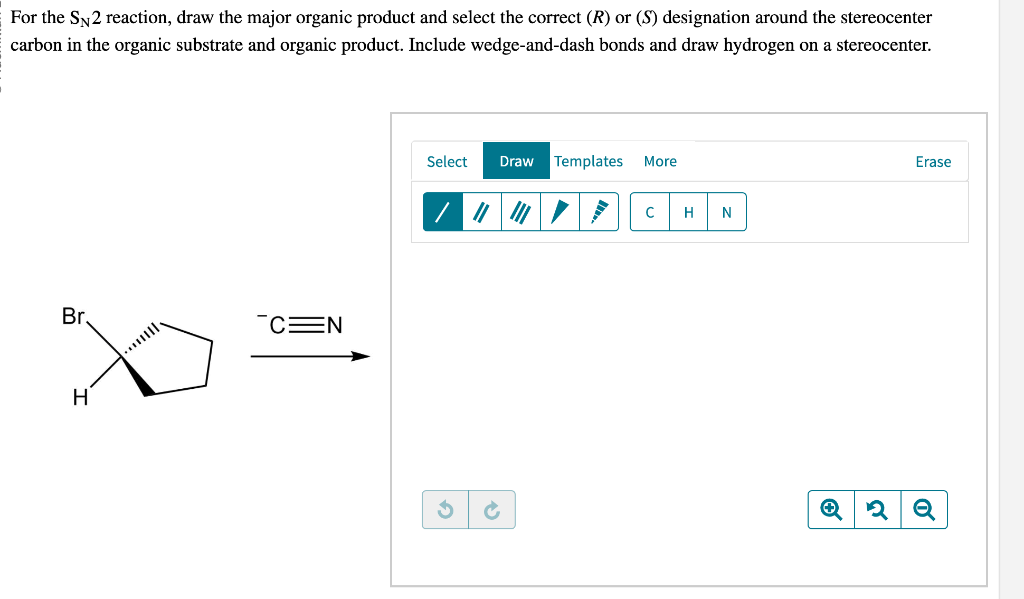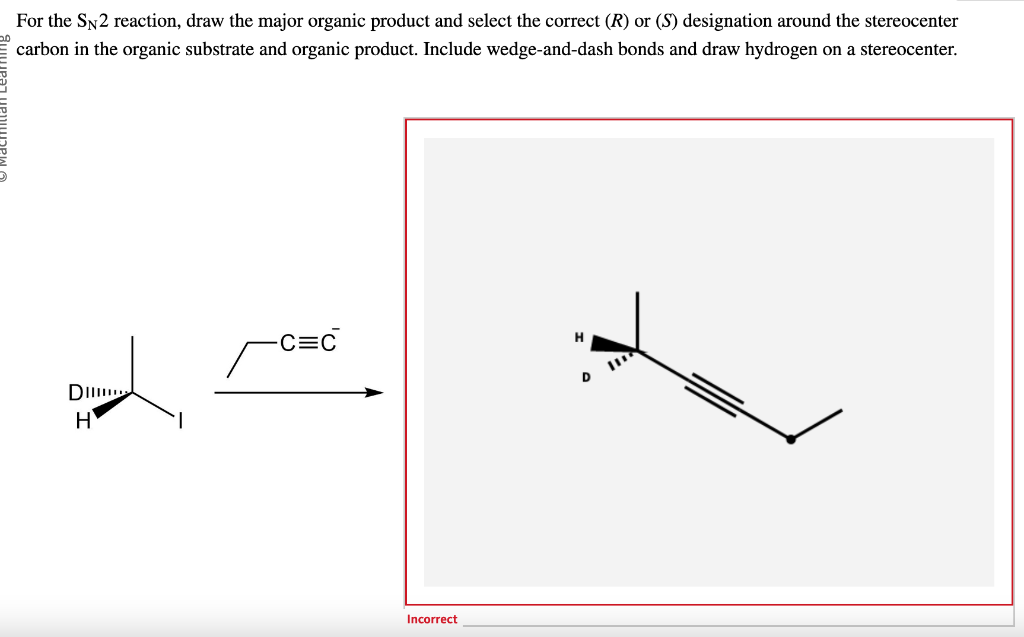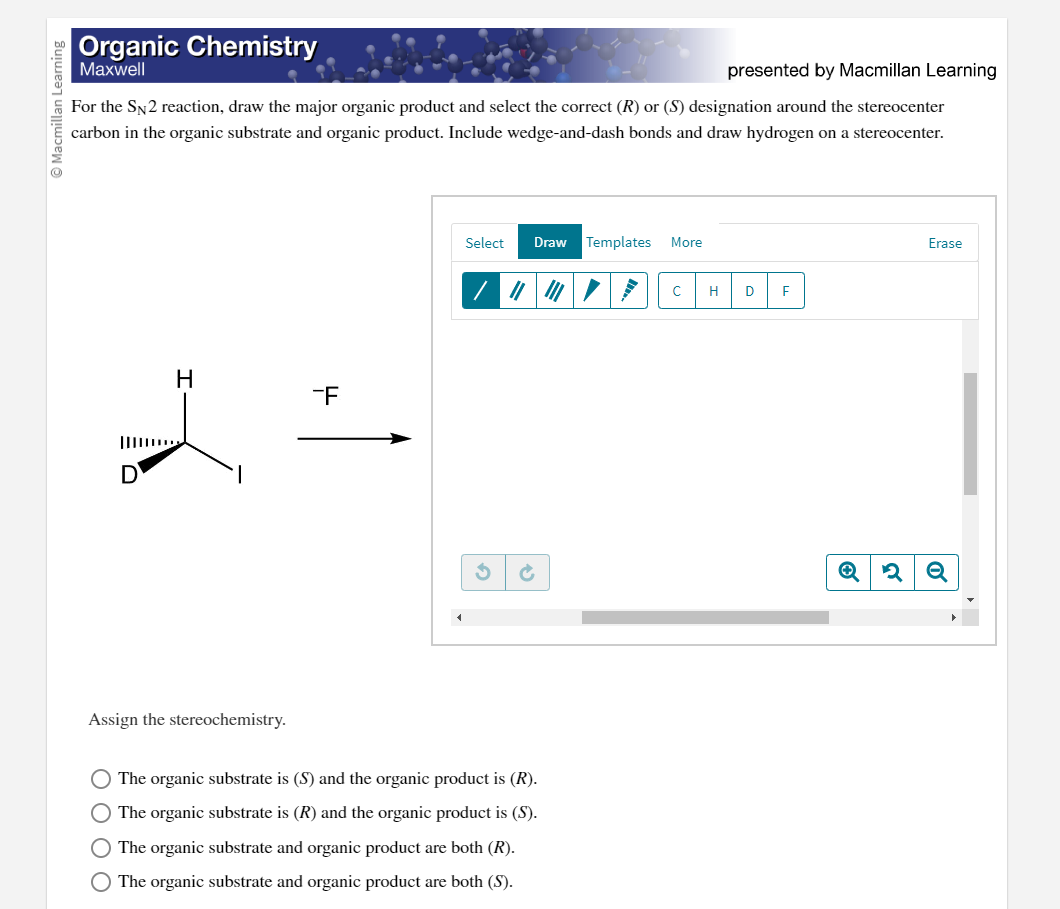For The Sn2 Reaction Draw The Major Organic Product, A) the reaction proceeds by the sn1 mechanism;
For The Sn2 Reaction Draw The Major Organic Product - Web draw the major, neutral organic product obtained if: We will learn about the reaction mechanisms, and how. Draw the major organic product for the reaction shown. Web predict the products and specify the reagents for s n 2reactions with stereochemistry; Kinetics, orbital interaction, stereochemistry and how to draw curved arrows in the mechanism. Propose mechanisms for s n 2 reactions; Web the mechanism of the s n 2 reaction. In the first reaction, a negatively charged nucleophile attacks the electrophilic carbon of a. The correct answer is a because in stereochemistry we. Web the mechanism, rate law, and stereochemistry of sn2 reactions. Web predict the products and specify the reagents for s n 2reactions with stereochemistry; Web these two types of reactions are shown in the diagram below. Determine the order of a chemical reaction from experimentally. Web your solution’s ready to go! In the first reaction, a negatively charged nucleophile attacks the electrophilic carbon of a. B) the reaction proceeds by the sn2 mechanism. For the following sn2 reaction, draw the major organic product and select the correct (r) or (s) designation around the stereocenter carbon in the. Carbon in the organic substrate and. Kinetics, orbital interaction, stereochemistry and how to draw curved arrows in the mechanism. The reaction takes place in a single step when. Carbon in the organic substrate and. B) the reaction proceeds by the sn2 mechanism. Web in an sn2 reaction, the nucleophile attacks the substrate molecule, displacing the leaving group, resulting in the formation of a new organic product and an. Propose mechanisms for s n 2 reactions; Web these two types of reactions are shown in the diagram below. Web predict the products and specify the reagents for s n 2reactions with stereochemistry; In the first reaction, a negatively charged nucleophile attacks the electrophilic carbon of a. A) the reaction proceeds by the sn1 mechanism; Web sn1, sn2, e1, and e2 reactions form the basis for understanding why certain products are more likely to form than others. The organic. Web for the following sn2 reaction, draw the major organic product and select the correct (r) or (s) designation around the stereocenter carbon in the organic substrate and. Draw the major organic product for the reaction shown. Propose mechanisms for s n 2 reactions; Do not draw counterions or byproducts. Web your solution’s ready to go! Web in an sn2 reaction, the nucleophile attacks the substrate molecule, displacing the leaving group, resulting in the formation of a new organic product and an. For the following sn2 reaction, draw the major organic product and select the correct (r) or (s) designation around the stereocenter carbon in the. Web these two types of reactions are shown in the. Web the mechanism of the s n 2 reaction. Web the mechanism, rate law, and stereochemistry of sn2 reactions. A) the reaction proceeds by the sn1 mechanism; Do not draw counterions or byproducts. Propose mechanisms for s n 2 reactions; The correct option is a. Web draw the major, neutral organic product obtained if: Consider the reaction given below: Web summary of sn1 and sn2 reactions and the types of molecules and solvents that favor each. Do not draw counterions or byproducts. Web 1.) for the s n 2 reaction, draw the major organic product and select the correct ( r) or ( s) designation around the stereocenter. Draw the major organic product for the reaction shown. Practice questions on sn2 reactions. The correct option is a. Web predict the products and specify the reagents for s n 2reactions with stereochemistry; Determine the order of a chemical reaction from experimentally. Draw the major organic product for the reaction shown. Web the mechanism, rate law, and stereochemistry of sn2 reactions. We will learn about the reaction mechanisms, and how. Carbon in the organic substrate and. The reaction takes place in a single step when the incoming nucleophile approaches from a direction 180° away from the leaving halide ion,. Do not draw counterions or byproducts. Web the mechanism of the s n 2 reaction. The correct answer is a because in stereochemistry we. Consider the reaction given below: Web 1.) for the s n 2 reaction, draw the major organic product and select the correct ( r) or ( s) designation around the stereocenter. Draw the major organic product for the reaction shown. The correct option is a. Web the mechanism, rate law, and stereochemistry of sn2 reactions. For the sn2 reaction, draw the major organic product and select the correct (r) or (s) designation around the stereocenter carbon in the organic substrate and organic product. Web draw the major, neutral organic product obtained if: B) the reaction proceeds by the sn2 mechanism. Carbon in the organic substrate and. We will learn about the reaction mechanisms, and how. Practice questions on sn2 reactions. In the first reaction, a negatively charged nucleophile attacks the electrophilic carbon of a.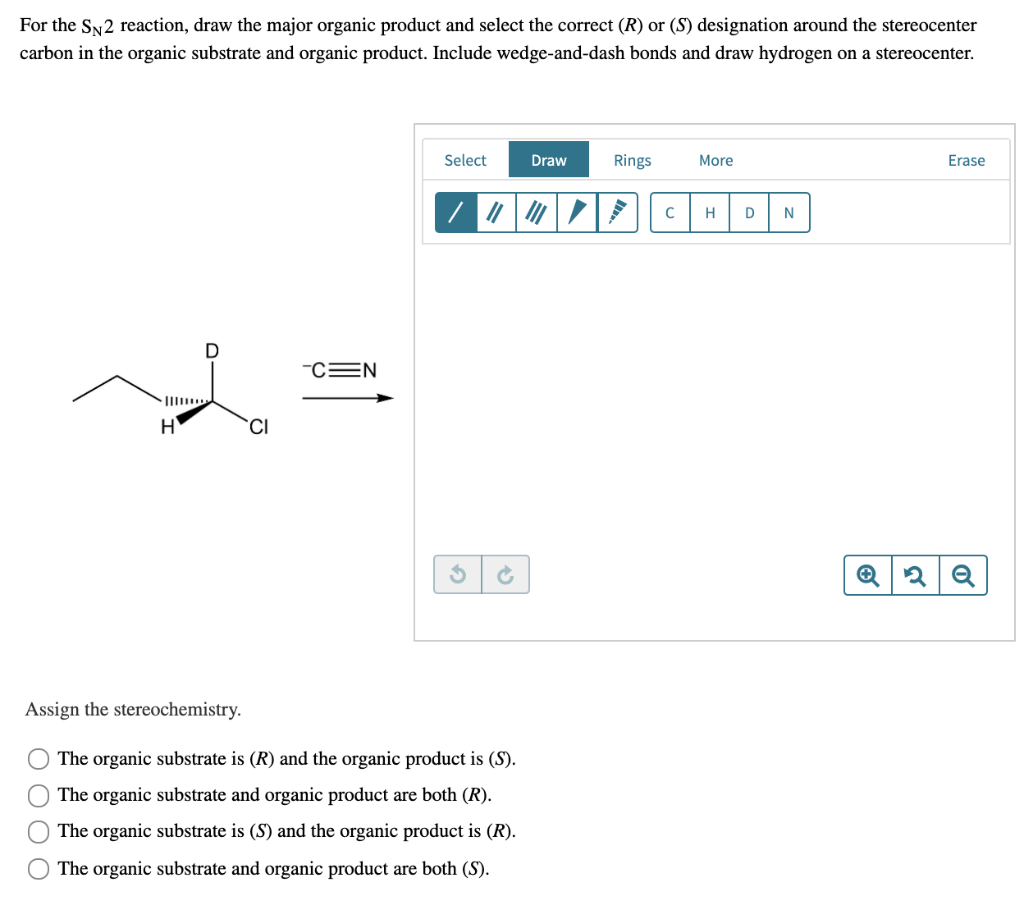
Solved For the SN2 reaction, draw the major organic product
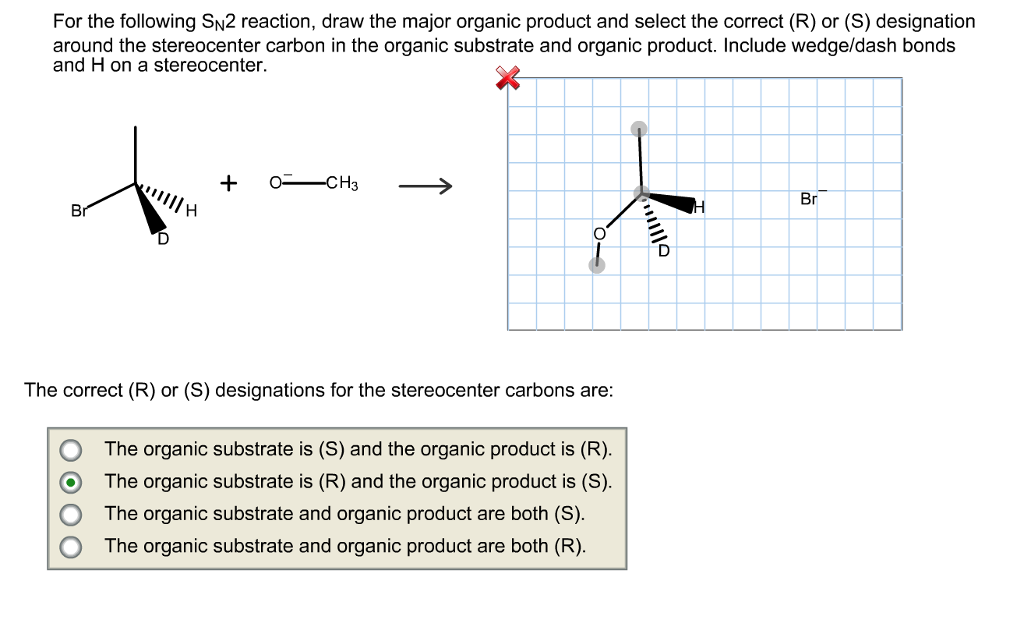
Solved For the following SN2 reaction, draw the major
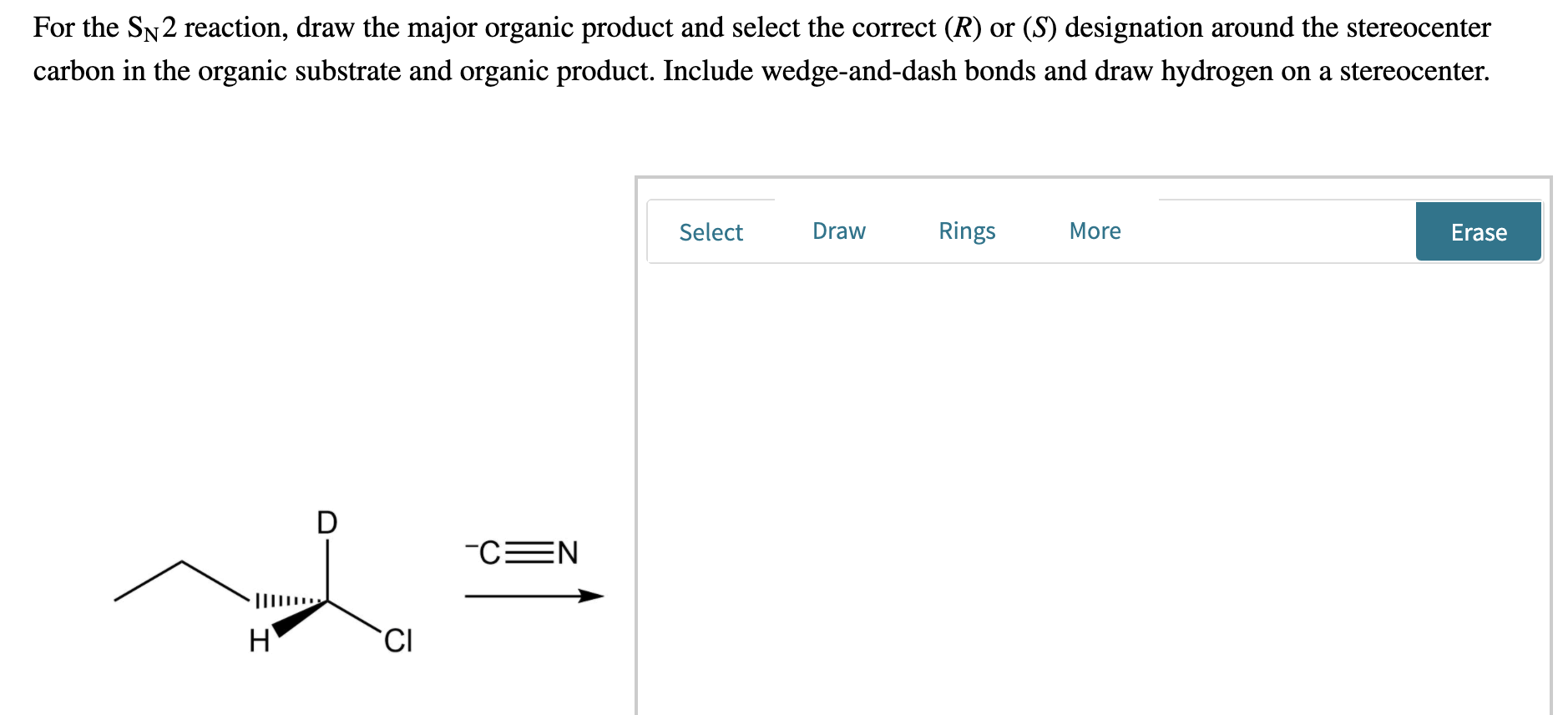
Solved For the Sn2 reaction, draw the major organic product

Solved For the following SN2 reaction, draw the organic and
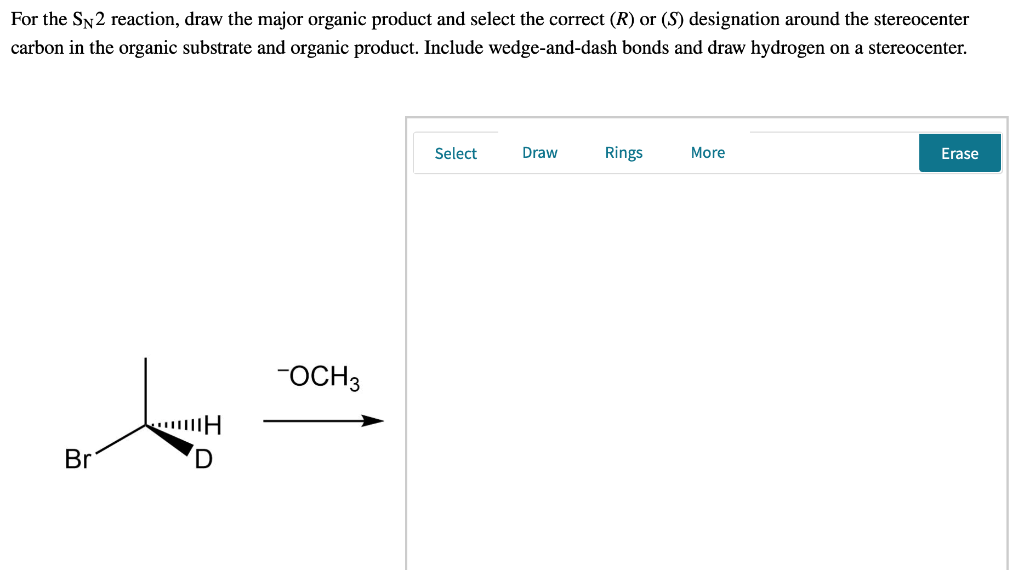
Solved For the Sn2 reaction, draw the major organic product
Solved For the SN2 reaction, draw the major organic product
Solved For the SN2 reaction, draw the major organic product
Solved For the SN2 reaction, draw the major organic product

Draw The Correct Organic Product Of The Following Sn2 Reaction
Solved For the Sn2 reaction, draw the major organic product
Web Predict The Products And Specify The Reagents For S N 2Reactions With Stereochemistry;
Kinetics, Orbital Interaction, Stereochemistry And How To Draw Curved Arrows In The Mechanism.
Propose Mechanisms For S N 2 Reactions;
Web In An Sn2 Reaction, The Nucleophile Attacks The Substrate Molecule, Displacing The Leaving Group, Resulting In The Formation Of A New Organic Product And An.
Related Post:
